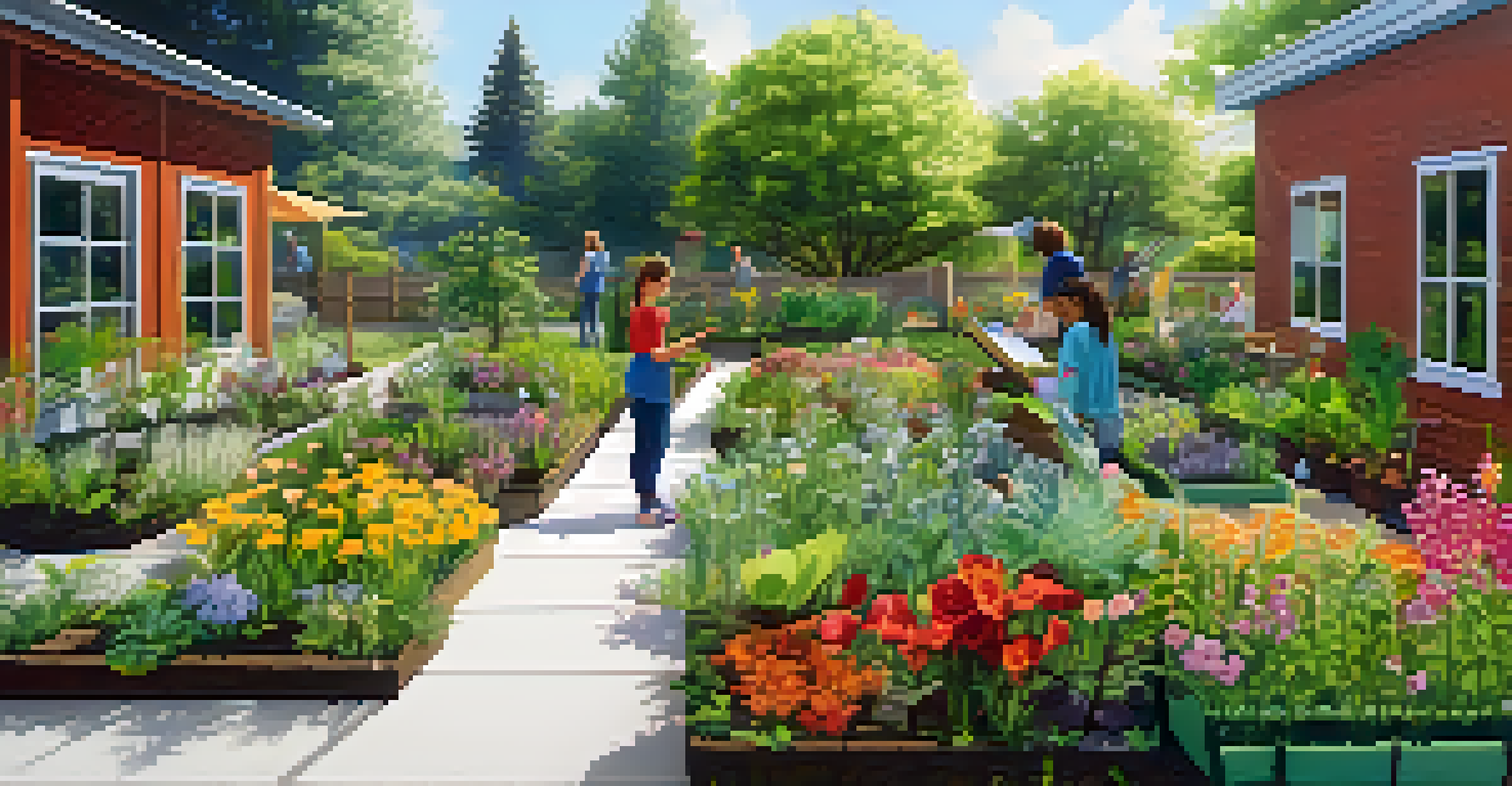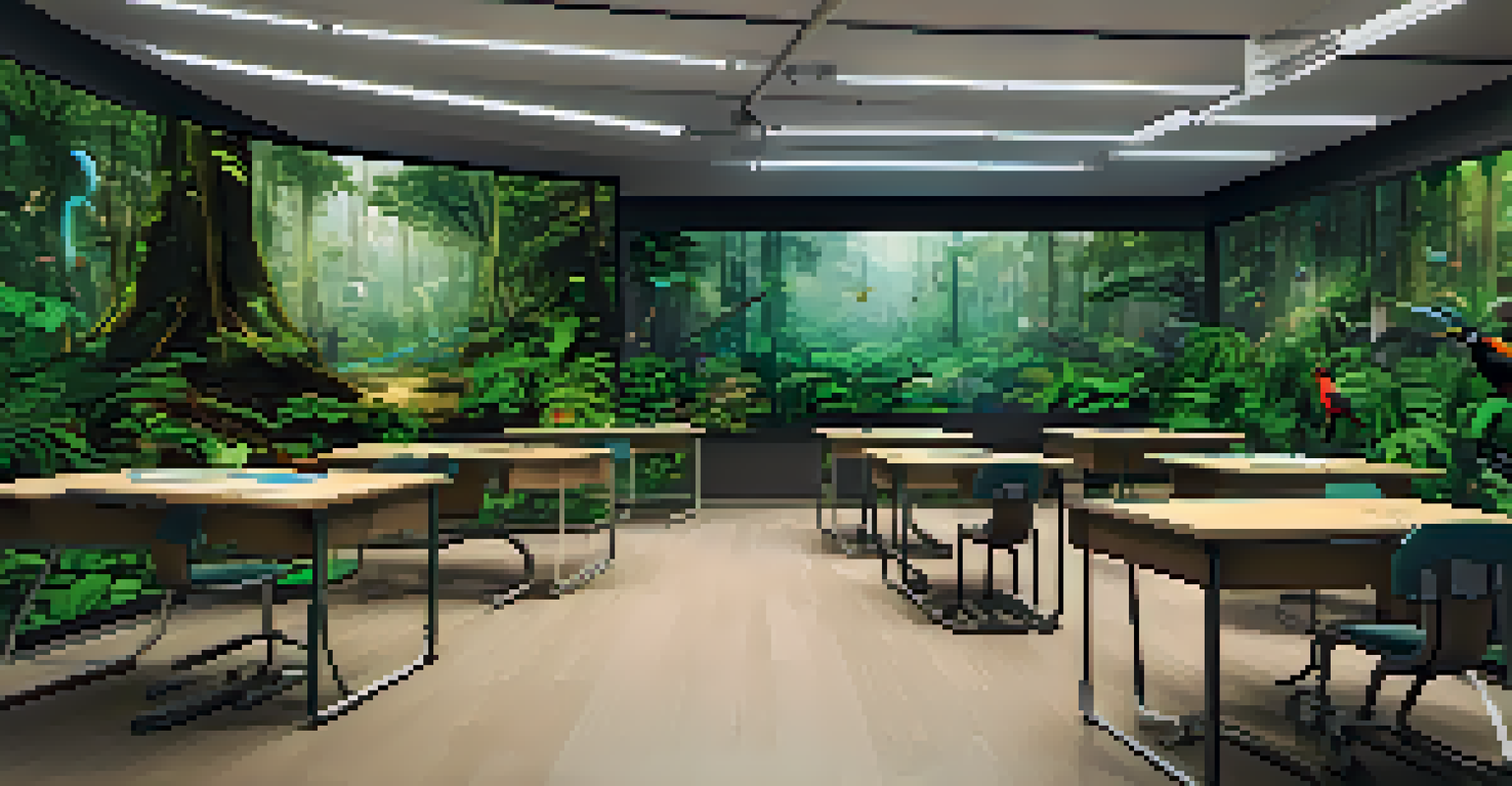Integrating Science and Art: A Creative Learning Approach

The Power of Interdisciplinary Learning in Education
Interdisciplinary learning merges different subjects to enhance understanding. By combining science and art, students can explore concepts in a more holistic way. This approach fosters critical thinking and encourages innovation, skills that are essential in today's world.
Creativity is thinking up new things. Innovation is doing new things.
For example, a project that involves painting the life cycle of a butterfly can help students visualize scientific concepts while expressing their creativity. Such projects not only make learning enjoyable but also deepen comprehension. It’s like connecting the dots between different fields, creating a richer educational experience.
Moreover, integrating these disciplines can cater to various learning styles, making it accessible for everyone. Students who may struggle with traditional methods often thrive when they can engage creatively. This inclusivity is vital for cultivating a love for learning.
Real-World Applications of Science and Art Integration
When we think about the real world, the line between science and art often blurs. Architects, for example, utilize both mathematical principles and aesthetic design to create beautiful structures. This integration is not just theoretical; it plays a key role in how we interact with our environment.

In fields like environmental science, artists can help visualize data through compelling infographics or installations. This not only communicates complex information but also evokes emotion, prompting action. Imagine a striking sculpture made from recycled materials that highlights ocean pollution; it can inspire awareness and change.
Such collaborations open doors to innovative solutions for global challenges. By combining artistic vision with scientific research, we can create campaigns and projects that resonate deeply with communities. This synergy showcases the importance of both fields working together to address pressing issues.
Engaging Students through Hands-On Projects
Hands-on projects are an effective way to engage students in learning. By physically creating something, whether it’s a scientific experiment or an art piece, students can see the direct results of their efforts. This tactile approach not only makes learning fun but also reinforces concepts through experience.
Art is the most beautiful of all lies; it is a lie that reveals the truth.
For instance, a classroom project could involve designing a model of a sustainable garden. Students would research plant biology while applying their artistic skills to design the layout. This method not only teaches them about ecosystems but also allows them to express their creativity.
These projects foster collaboration among students, encouraging teamwork and communication. When they work together, they can leverage each other's strengths, creating a richer learning environment. Plus, it's a great way to build lasting friendships through shared experiences.
The Role of Technology in Merging Science and Art
Technology plays a pivotal role in bridging the gap between science and art. Tools like digital painting software and 3D modeling applications allow students to experiment and create in innovative ways. This integration not only enhances their skills but also prepares them for future careers.
For example, virtual reality can be used to simulate environments for scientific exploration while allowing artistic interpretation. Imagine stepping into a digitally created rainforest while learning about its ecosystem! This immersive experience deepens understanding and retention of knowledge.
Additionally, online platforms enable collaboration across geographical boundaries, connecting students from different cultures. They can share their projects, receive feedback, and gain diverse perspectives. This global exchange enriches their learning experience, making it more relevant in our interconnected world.
Fostering Creativity through Experimentation
Creativity flourishes in an environment that encourages experimentation. When students feel safe to explore new ideas without the fear of failure, they are more likely to innovate. Integrating science and art provides such a space, allowing for trial and error in both fields.
For instance, a project could involve creating an art piece that reacts to environmental conditions, like temperature or humidity. This allows students to experiment with materials while applying scientific principles. The thrill of seeing their artwork change can spark further curiosity and exploration.
Moreover, this approach cultivates resilience and problem-solving skills. As students encounter challenges during their experimentation, they learn to adapt and revise their ideas. This growth mindset is essential for success in any field, encouraging lifelong learning.
Inspiring Future Innovators through Creative Learning
Creative learning that integrates science and art can inspire the next generation of innovators. By exposing students to various fields, we encourage them to think outside the box. This mindset is crucial as they tackle the complex challenges of the future.
Consider how many groundbreaking inventions stem from a combination of artistic vision and scientific inquiry. The smartphone, for example, is a result of engineering, design, and user experience principles. By nurturing creativity in education, we equip students with the skills to push boundaries.
Additionally, this approach promotes a sense of curiosity and wonder about the world. Students who engage in creative learning are more likely to pursue careers in STEM (Science, Technology, Engineering, and Mathematics) fields, where innovation thrives. Creating a generation of problem solvers and thinkers is a gift we can give to our future.
The Importance of Community and Collaboration
Community plays a vital role in the integration of science and art. When schools, families, and local organizations collaborate, they can create a rich learning ecosystem. This support system can provide resources, mentorship, and opportunities for students to engage with both fields.
For example, local museums or science centers can partner with schools to offer workshops that merge these disciplines. Such collaborations not only enhance student learning but also build community connections. Imagine students presenting their projects at a local art fair, blending scientific discovery with artistic expression.

Moreover, community engagement can help students see the relevance of their education in the real world. When they understand how their learning impacts their surroundings, they become more invested in their education. This connection fosters a sense of belonging and purpose, motivating them to excel.